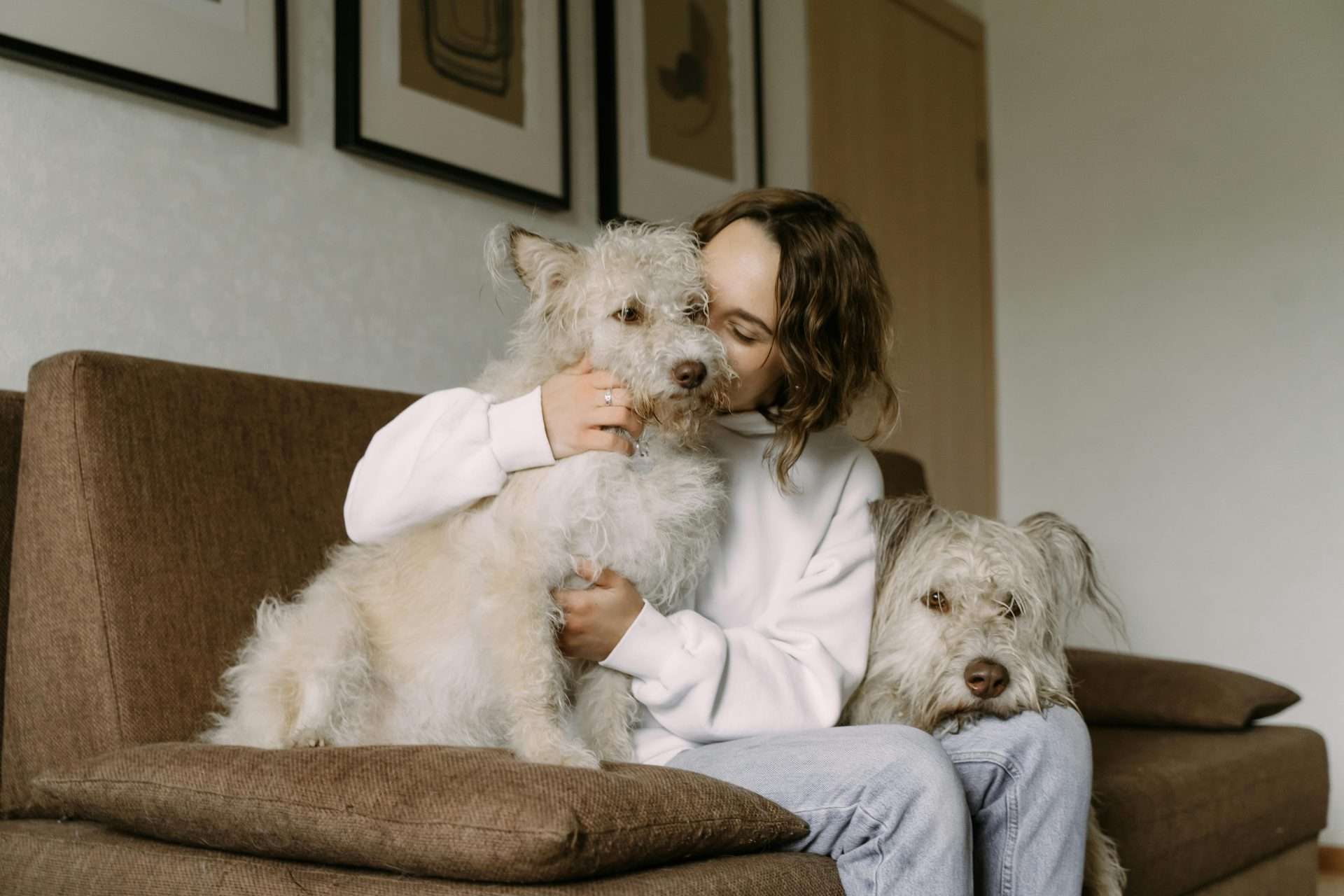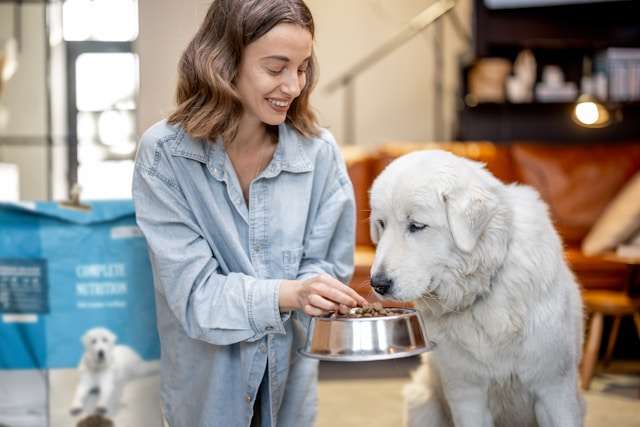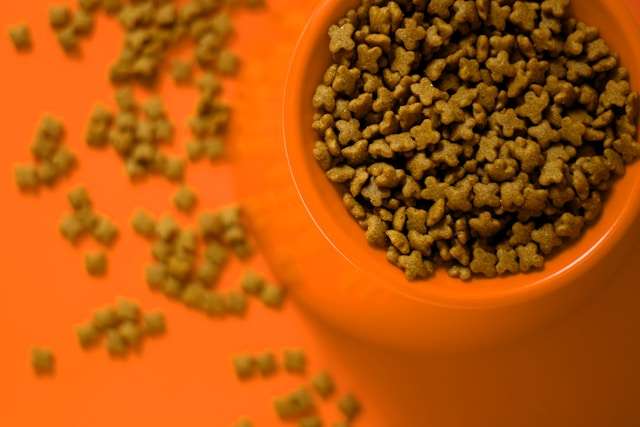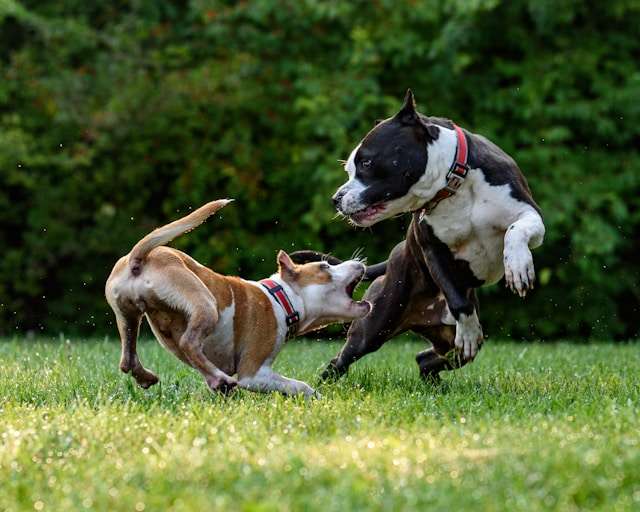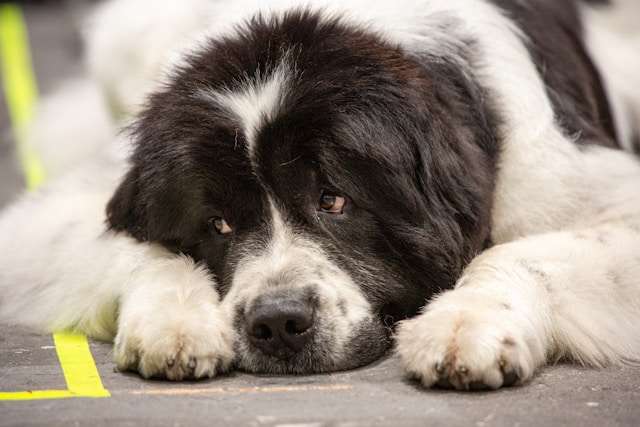Why Dogs Can’t Eat Chocolate: Risks Every Dog Owner Must Know
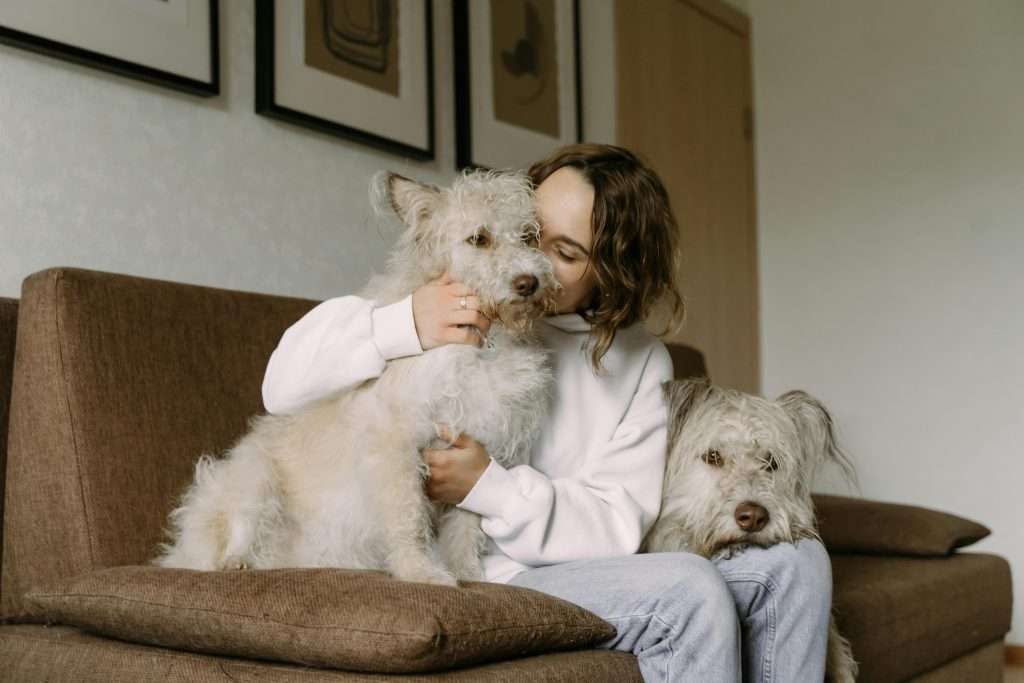
Why Dogs Can’t Eat Chocolate: Risks Every Dog Owner Must Know. We all love to spoil our dogs, don’t we?
Whether slipping them a bite of our food or giving them their favorite treat, it feels like a simple way to show we care. But not every treat is a safe choice. Chocolate, for instance, can be incredibly dangerous for dogs.
Learning why dogs can’t eat chocolate is essential for keeping them healthy and happy. I remember when my dog, Savannah, sniffed at a piece of leftover chocolate cake—it was a frightening reminder to be extra cautious with what we leave around.
Keeping harmful foods like chocolate out of reach could save your furry friend from a serious health scare.
Table of Contents
Key Takeaways
Chocolate might be one of our favorite indulgent treats, but for dogs, it’s anything but harmless. As a dog owner, knowing the key reasons why chocolate is dangerous and how to minimize any risks is essential. Let’s break down the most critical takeaways so you’ll feel confident safeguarding your furry friends.
Chocolate Is Toxic Due to Theobromine and Caffeine
Chocolate contains theobromine and caffeine, two compounds dogs can’t metabolize efficiently. Unlike humans, a dog’s system processes these stimulants much slower, causing them to build up to toxic levels.
As a result, even small amounts of chocolate can lead to symptoms like restlessness, high heart rate, vomiting, and in severe cases, seizures. This resource from VCA Hospitals explains more about chocolate poisoning in dogs.
Amount and Type of Chocolate Matters
Not all chocolate is created equal when it comes to toxicity. Darker chocolates, baking chocolate, and cocoa powder contain higher levels of theobromine and are far more dangerous than milk chocolate or white chocolate.
Additionally, the size of your dog plays a role; a small dog consuming the same amount of chocolate as a larger dog is more likely to experience severe symptoms. The takeaway? Even a “small treat” could be a big problem for your pet. Learn about the varying risks associated with chocolate here.
Prevention Is Always Better Than Treatment
It’s key to be mindful about where you store chocolate and communicate with family or housemates. Keep all chocolate products, from candy bars to baked goods, safely tucked away in high cabinets or containers your dog can’t access.
If your dog has consumed chocolate, don’t waste time; call your vet immediately for advice. Quick action could make all the difference. This article dives deeper into how to act quickly.
Signs to Watch for If Your Dog Eats Chocolate
Sometimes accidents happen, so recognizing signs of chocolate poisoning is essential. Symptoms can appear within hours of ingestion and may include:
- Panting or restlessness
- Vomiting or diarrhea
- Fast or irregular heart rate
- Muscle tremors or seizures
It’s essential to monitor your dog closely and seek veterinary care if symptoms escalate. Always trust your gut—when in doubt, get professional help. Check out this list for more detailed signs and symptoms to keep in mind.
Understanding the risks and preventing chocolate exposure can keep your beloved dog safe and healthy. Knowledge truly is your best defense against accidental chocolate poisoning. Let’s always prioritize their well-being!
Why Dogs Can’t Eat Chocolate
If you’ve ever wondered why dogs can’t eat chocolate, the answer lies in their unique biology. While chocolate is a delightful treat for humans, it contains compounds that can seriously harm our furry friends. Let’s break it down into two key components: theobromine and caffeine.
The Role of Theobromine in Chocolate Toxicity
Chocolate contains theobromine, a bitter alkaloid responsible for its harmful effects on dogs. Unlike humans, dogs metabolize this compound very slowly, allowing it to build up in their system. This slow breakdown can lead to toxic reactions, even in relatively small amounts.
When theobromine accumulates, it overstimulates a dog’s nervous system and cardiovascular function. You might notice concerning symptoms such as:
- Hyperactivity: Your dog may appear overly restless or agitated.
- Vomiting and Diarrhea: These are common early signs as their body attempts to rid itself of the toxin.
- Tremors or Seizures: In severe cases, a dog exposed to high levels of theobromine can experience life-threatening reactions.
The darker the chocolate, the higher its theobromine concentration. This means dark chocolate, cocoa powder, and baking chocolate are particularly dangerous. This resource explains more about how specific chocolate types impact dogs.
Caffeine’s Effect on Dogs
While theobromine grabs most of the attention, caffeine is another compound in chocolate that poses a serious risk to dogs. Much like its effect on humans, caffeine serves as a stimulant. However, for dogs, the consequences are far more pronounced.
Caffeine can affect a dog’s heart, causing elevated blood pressure and abnormal heart rhythms. This sudden cardiovascular stress may lead to symptoms such as:
- Increased Heart Rate: This can make your dog appear panicked or out of breath.
- Muscle Tremors: These involuntary shakes are another sign that their system is overwhelmed.
Both compounds, theobromine and caffeine, work together to create a dangerous one-two punch. That’s why chocolate should always stay far out of paws’ reach—even a small indulgence can become a health emergency. Discover more about these effects at VCA Hospitals.
Protecting your dog from chocolate is crucial for their safety and well-being. 노
Understanding Chocolate Types and Their Impact
Not all types of chocolate are created equal, especially when discussing their effects on dogs. Different kinds of chocolate contain varying levels of theobromine and caffeine, which are responsible for their toxic impact on dogs.
Understanding these differences can help you recognize potential dangers and take quick action if needed. Here’s how dark, milk, and white chocolate differ regarding their toxicity levels for dogs.
Why Dark Chocolate Is More Toxic
Dark chocolate is by far the most dangerous kind of chocolate for dogs. It contains significantly higher levels of theobromine, a compound dogs cannot metabolize efficiently. To put this into perspective, dark chocolate can have up to 16 milligrams of theobromine per gram, while milk chocolate has only about 2 milligrams per gram.
If you’re wondering how much is too much, here’s a general guide to keep in mind:
- 9 mg of theobromine per pound of a dog’s body weight: Mild symptoms like restlessness or vomiting appear.
- 18 mg per pound: More severe signs, including rapid heart rate and tremors, become likely.
- Over 36 mg per pound: This can lead to life-threatening symptoms like seizures or even cardiac arrest.
So, for a small, 20-pound dog, eating just 1.5 ounces of dark chocolate could trigger severe toxicity symptoms. It’s alarming how little is needed to cause such harm. Learn more about chocolate poisoning symptoms here.
Dangers of White Chocolate
At first glance, white chocolate might seem less concerning—after all, it contains far less theobromine than dark or even milk chocolate. However, this doesn’t mean it’s safe for dogs to eat. While theobromine toxicity might not be an immediate issue, white chocolate’s high sugar and fat content poses its own risks.
- Pancreatitis risk: Consuming high-fat foods like white chocolate can lead to pancreatitis, a painful and potentially life-threatening inflammation of the pancreas.
- Obesity and blood sugar issues: The excessive sugar in white chocolate can contribute to obesity and blood sugar spikes, particularly in small or older dogs.
If your dog ingests white chocolate, you must watch them closely. While you might not see symptoms of poisoning, they could experience vomiting, diarrhea, or abdominal pain, especially if they consume large quantities. Learn about other risks of sweet treats for dogs here.
Understanding how different types of chocolate affect dogs is key to avoiding emergencies. Always keep any form of chocolate far out of reach—it’s simply not a gamble worth taking regarding your dog’s health.
What To Do If Your Dog Eats Chocolate
Accidents happen, and sometimes our dogs manage to get into foods they shouldn’t. Chocolate is one of the most dangerous treats they can consume, but knowing what steps to take immediately can make a world of difference for their health. Here’s what you need to know.
Spot the Signs of Chocolate Ingestion
When a dog eats chocolate, symptoms can appear quickly, often within hours. Early detection of these signs can help minimize the damage and get your furry friend the help they need. Be alert for these key symptoms:
- Vomiting: Your dog may attempt to rid their body of the toxin by throwing up.
- Restlessness or hyperactivity: They might appear unusually energetic or anxious.
- Elevated heart rate: A racing, irregular heartbeat can be a hallmark of chocolate poisoning.
- Tremors or muscle rigidity: These could indicate advancing toxicity and should be treated as an emergency.
Monitoring them closely will help you recognize how severe the situation is. Don’t wait to act if your dog exhibits any combination of these symptoms. Time is critical to ensuring their safety. For more details about what to look for, explore expert advice from the AKC here.
Seeking Veterinary Help Urgently

The most critical step after discovering your dog has eaten chocolate is to contact a veterinarian immediately. Time is of the essence when dealing with chocolate poisoning, as symptoms can escalate rapidly.
Even if you’re unsure of the quantity consumed, a professional can guide you through the necessary next steps to protect your dog’s health.
Veterinarians might use various methods to respond, such as:
- Inducing vomiting: This is often the first line of defense to remove chocolate from your dog’s system.
- Administering activated charcoal: This helps absorb toxins and prevents them from entering the bloodstream.
- Monitoring and supportive care: Depending on severity, your dog may require IV fluids, medications to control symptoms like seizures, or other interventions.
Don’t attempt these treatments independently without veterinary guidance, as improper methods can sometimes cause more harm than good. Always share critical information, like the type and amount of chocolate consumed, your dog’s weight and any symptoms.
For further information on why urgent action matters, check this comprehensive guide from PetMD.
Taking quick, decisive action when your dog eats chocolate can make all the difference. Recognizing the signs and engaging a vet immediately gives your dog the best chance of a full recovery.
Preventing Chocolate Poisoning
Keeping your dog safe from chocolate poisoning starts with a proactive approach. As dog owners, it’s our job to minimize the risks by ensuring chocolate is stored securely and everyone in the home knows why it’s dangerous. Let’s look at actionable steps to keep chocolate from paws’ reach.
Safe Storage Solutions
When it comes to storing chocolate, out of sight truly means out of mind for pets and visitors who might not think twice about leaving a snack out. Here are some simple yet practical ways to secure chocolate in your home:
- Use high cabinets: Store chocolates in cabinets or places physically inaccessible to your dog, especially if your pup has a knack for counter surfing.
- Snap-on or childproof containers: Invest in airtight containers with secure lids. These are not only helpful for keeping chocolate fresh but also act as an additional barrier for curious noses.
- Designated pantry spots: Keep candy and other chocolate treats in a specific place that’s off-limits to dogs.
- Avoid open-access areas: Do not store chocolate on coffee tables, countertops, or anywhere else your dog could easily snag it.
Taking extra precautions might seem tedious, but it’s far easier than dealing with a health emergency. Chocolate poisoning is one of the most preventable accidents for dogs, and it starts with thoughtful storage. Learn more about preventing access to harmful foods here.
Educating Children and Guests
Even with the best storage solutions in place, accidents can happen. That’s why educating the people around your dog—especially kids and visitors—plays a critical role.
Children may not understand how even a small chocolate treat can poison dogs. Make it a point to explain that chocolates should never be shared with pets, no matter how small or tempting. Create simple house rules like:
- Never leave chocolate snacks unattended.
- Always put away treats immediately after eating.
Surprisingly, guests often pose an equal risk. Whether leaving a chocolate dessert in an open bag or being unaware of your dog’s dietary restrictions, educating visitors about chocolate toxicity is just as important. You might say, “We love sharing our food, but chocolate is dangerous for our dog—let’s be mindful.”
According to experts, chocolate ranks among pets’ top reported toxic food ingestions yearly. Awareness can drastically reduce these incidents. Explore more insights on the dangers of chocolate for dogs here.
Preventing chocolate poisoning isn’t just about avoiding an inconvenient vet visit; it’s about ensuring the safety and well-being of your four-legged family member. Combining secure storage practices with education creates a safe space for your dog to thrive.
My Dog Savannah and Chocolate Safety
Savannah, my spirited Labrador, once turned my world upside down when she found a chunk of chocolate on the living room table. That terrifying moment taught me the importance of chocolate safety for dogs.
Chocolate poisoning is no joke, and keeping your furry friends safe from accidental ingestion isn’t just a precaution—it’s an absolute priority. I explain what I’ve learned to ensure Savannah stays safe and healthy.
How I Secure Chocolates At Home
Chocolate safety starts at home, and I’ve made it a top priority to keep chocolate out of Savannah’s reach. Here are a few precautions that have done wonders:
- Cabinet Storage: All chocolate, including baking supplies, goes into high, locked cabinets. Even if Savannah could jump like a kangaroo, there’s no way she’d access it.
- No Unattended Sweets: This was a rule not just for me but also for my family and guests. Chocolate cakes or candy left on tables or counters is off-limits.
- Trash Security: Dogs are curious, and Savannah is no exception. For this reason, I invested in a dog-proof trash can to prevent her from rummaging through discarded chocolate wrappers or leftovers.
If you haven’t yet thought about better storing your dog’s kryptonite, I cannot stress enough how helpful these steps are. Learning what foods are unsafe for dogs, like chocolate, is critical.
Educating Family and Guests
Savannah inspired me to establish house rules about chocolate safety. Visitors are often unaware of how dangerous chocolate can be, so I’m always about spreading awareness. Here’s what works for us:
- Clear Communication: Before offering food to Savannah, guests know to ask first.
- Labeling Treats: Any chocolate treats served at parties are marked as dangerous for dogs.
- Setting Boundaries: Savannah has learned to stay away when we’re eating, helping prevent accidental food slips.
These small but practical steps can drastically reduce the chances of chocolate poisoning in your household. See these dog care tips for more ways to avoid hazards like chocolate.
A Close Call with Savannah
Once, my son left a half-eaten chocolate muffin on the coffee table. Savannah’s quick sniff and faster reflexes meant she had gulped part of it before I could intervene. I panicked and immediately contacted the veterinarian. Fortunately, she hadn’t consumed enough to cause critical harm, but that close call stayed with me.
The vet reminded me, and I’ll remind you now: even small amounts of darker chocolates, like muffins, can harm dogs. Acting fast is always the best course in these situations. If you’re wondering how much chocolate is toxic for dogs, this article provides insight into chocolate poisoning.
Why Even White Chocolate Is Dangerous
You might think that white chocolate is less harmful because it has lower levels of theobromine, but don’t be fooled. It’s high fat and sugar content can lead to pancreatitis or obesity in dogs. Savannah’s diet is carefully monitored, so she stays strong and playful, meaning no chocolate, white or otherwise. Learn why white chocolate is no exception in this helpful guide.
Keeping Savannah chocolate-safe isn’t just about avoiding accidents; it’s about her health and longevity. Every tiny step makes a massive difference in protecting our furry family members.
Other Common Foods Harmful to Dogs
While chocolate is one of the most well-known toxic foods for dogs, it isn’t the only one that poses a danger. As loving pet owners, we must be aware of other dietary hazards that could harm our furry friends.
Dogs are curious creatures, often exploring the world with their mouths, so keeping harmful foods out of reach helps ensure their health and safety.
Brief Overview of Top Harmful Foods
There’s a long list of foods that are unsafe for dogs, and some might already be sitting in your kitchen. Two particularly harmful ones are grapes/raisins and onions/garlic, which can cause serious health complications.
- Grapes and Raisins: While they may seem harmless, these fruits are highly toxic to dogs. Even a tiny amount can lead to kidney failure, causing symptoms such as vomiting, lethargy, and decreased appetite. If you believe your dog has consumed grapes or raisins, it’s crucial to contact your vet immediately. Learn more about harmful foods for pets here.
- Onions and Garlic: These staples in many human dishes contain compounds that can damage a dog’s red blood cells, leading to anemia. Both raw and cooked forms are dangerous; symptoms might include weakness, pale gums, and an elevated heart rate. Over time, exposure to even small amounts can have a cumulative effect, so it’s best to keep these ingredients far away from your pup. The ASPCA offers more details on foods to avoid feeding your pets.
Other culprits include macadamia nuts, which can cause vomiting and tremors, and foods containing xylitol, a sweetener found in sugar-free gum and candies, which can lead to dangerously low blood sugar levels in dogs.
Where To Learn More About Dog Nutrition
Dog nutrition goes beyond avoiding harmful foods. Knowing what to feed your dog is as important as knowing what to avoid. I recommend diving into expert resources on healthy feeding habits if you want to provide a well-rounded diet or manage specific health issues.
For instance, this guide on the best dog food for health issues offers excellent insight into tailored nutritional choices for your dog’s needs.
To take it a step further, some guides help you navigate tricky food choices and interpret the ingredient labels on commercial dog food products.
This nutrition tips page is another excellent place to start if you’re trying to understand how to build a balanced diet for your pup. By arming yourself with knowledge, you can ensure your dog stays healthy and enjoys a long, happy life.
Frequently Asked Questions About Why Dogs Can’t Eat Chocolate
Understanding why dogs can’t eat chocolate is crucial for any dog owner, but questions still arise. Here’s a breakdown of the most common questions people ask about dogs and chocolate. Whether you’re wondering about symptoms of chocolate poisoning or what to do in an emergency, this section covers the answers you need.
What Makes Chocolate Toxic to Dogs?
Chocolate is toxic to dogs due to theobromine and caffeine, two compounds their bodies cannot metabolize efficiently. Unlike humans, dogs break down these stimulants much slower, allowing them to reach toxic levels quickly.
When ingested, these compounds overstimulate a dog’s nervous system and cardiovascular system, leading to symptoms like hyperactivity, vomiting, seizures, and in severe cases, even death. Learn more about the effects of theobromine and caffeine on dogs here.
How Much Chocolate Is Dangerous for My Dog?
The amount of chocolate that can harm a dog depends on the type of chocolate, the dog’s size, and how much they consumed. Dark chocolate and baking chocolate contain the highest levels of theobromine and are far more dangerous than milk or white chocolate. As a rule of thumb:
- For smaller dogs, even a tiny amount of dark chocolate can result in severe symptoms.
- Larger dogs may tolerate higher quantities but are not immune to the toxic effects.
If your dog ingests chocolate, it’s best to act immediately. You can consult with your veterinarian or check online chocolate toxicity calculators that determine the severity based on your dog’s weight and chocolate type. For more details, this article sheds light on how much chocolate is toxic.
What Should I Do If My Dog Eats Chocolate?
If your dog has consumed chocolate, here are the steps you need to take:
- Remove Access: Move the remaining chocolate out of reach.
- Determine the Amount and Type: Identify how much and what chocolate was eaten.
- Call Your Vet: Share details like your dog’s weight, age, and symptoms.
- Emergency Action: Sometimes, your vet may ask you to induce vomiting or bring your dog in immediately.
Swift action makes all the difference when dealing with chocolate poisoning. Explore this guide for more on handling chocolate ingestion emergencies.
Why Are Some Dogs Affected More Than Others?
Every dog reacts differently to chocolate ingestion based on size, breed, and health condition. Smaller dogs metabolize theobromine less effectively, making them more prone to chocolate toxicity. Older dogs with pre-existing health issues may also experience heightened risks.
For example, chocolate’s impact on the cardiovascular system can worsen if the dog has heart issues.
Additionally, if your dog has experienced chocolate poisoning before, they may have increased sensitivity, much like some humans with specific food allergies.
Can Dogs Eat Chocolate-Flavored Foods?
Chocolate-flavored foods still pose a risk to dogs because they often contain cocoa powder or chocolate derivatives, which carry the same toxic compounds. These seemingly “lighter” snacks can still harm your furry friend, from brownies to chocolate syrups.
Even foods marketed as “safe for dogs” should always be checked carefully for traces of theobromine or caffeine.
Is White Chocolate Safe for Dogs?
While white chocolate contains less theobromine, its high sugar and fat content still make it unsafe for dogs. Consuming large amounts can lead to digestive issues, obesity, or even pancreatitis. White chocolate is not a healthier alternative—avoiding giving your dog chocolate in any form altogether is better. Read this article for a closer look at the risks of white chocolate.
What Are Early Symptoms of Chocolate Poisoning?
Recognizing the early symptoms of chocolate poisoning is key to seeking timely treatment. Keep an eye out for:
- Restlessness or hyperactivity
- Vomiting or diarrhea
- Fast or irregular heartbeat
- Muscle tremors
Depending on the amount and type of chocolate ingested, symptoms can appear within hours of consumption or take up to 24 hours to develop. Monitoring your dog closely is crucial, especially if they have a tendency to snack on human foods. This resource can help with a detailed list of symptoms.
How Can I Prevent My Dog from Eating Chocolate?
Prevention is always better than treatment. To keep chocolate out of reach:
- Store chocolate products in high or locked cabinets.
- Avoid leaving chocolate desserts or wrappers in accessible areas like counters or trash cans.
- Educate children and guests about keeping chocolate snacks away from your pet.
Establishing habits that reduce risks is key to creating a dog-safe home. For more prevention tips, check out this helpful guide to pet-proofing your home.
FAQs like these help you stay prepared and informed, ensuring you know to protect your dog from chocolate toxicity. Remember, when in doubt, always consult with a professional!
Conclusion
Chocolate may be a treat we love, but for dogs, it’s a toxic hazard that can lead to severe health issues or even life-threatening emergencies. Understanding why dogs can’t eat chocolate comes down to their inability to process theobromine and caffeine, which are found in all chocolate types. We can protect our furry friends from harm by knowing the risks and taking preventive measures, such as securely storing chocolate and educating family members.
Savannah’s story reminds us that accidents happen, but being prepared and informed can make all the difference. Let’s commit to keeping our beloved pets safe by avoiding chocolate entirely and choosing healthier alternatives they’ll love. Check out these helpful insights for even more tips on making dog-safe choices.

